The CTIP program has funded multiple, innovative projects focused on construction to help practitioners advance the industry.
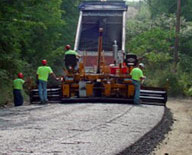
Driving Surface Aggregate for Unpaved Roads, 2015
The goal of this project is to demonstrate Driving Surface Aggregate (DSA) as an effective, economical, and environmentally safer option for surfacing unpaved roads. Federal land management agencies and tribes are the stewards of more than 600,000 miles of unpaved roads. Adoption of this method could better protect natural resources near roads and save money by reducing the frequency of aggregate replacement and road maintenance. This technology will be deployed at Muscatatuck National Wildlife Refuge near Seymour, Indiana, the Savannah District of the Upper Mississippi River National Wildlife Refuge, near Thomson, Illinois, the Finger Lakes National Forest in New York, and the Green Mountain National Forest in Vermont. The U.S. Forest Service is the lead agency. ...show more about
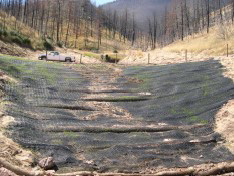
Road Embankment Protection for Fire and Burned Area Emergency Response, 2014
Fire remediation and burned area emergency response, rehabilitation, and remediation are costly and can be a large road maintenance repair issue. Where forest fires have burned all the trees and grass, and in areas that will channel rain water, this project has installed flexible "drapes" on the adjacent downhill side of gravel road slopes to prevent flood waters from washing away surface material and destroying the road. These drapes are placed in the Sierra National Forest in California (after the French Fire), and two more installations are planned in the National Forests of Klamath in California (after the Happy Camp Fire) and Okanogan-Wenatchee in Washington (after the Carlton Complex Fire). The drape material will be monitored in place for one or more seasons and then can be removed and re-used at other sites. Once installed, each project must then wait for an extreme flood event to demonstrate effectiveness. The U.S. Forest Service is the lead agency. ...show more about
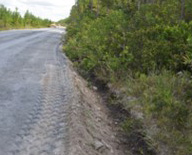
Paper Mill Boiler Ash for Low Volume Road Stabilization, 2014
The most common material used to stabilize unpaved roads is gravel. However, a cost effective source may not be available. Within forested regions, there is an abundance of paper mill by-products including paper mill boiler ash which have pozzolanic properties making them particularly suitable for road stabilization. This project will apply paper mill boiler ash to stabilize unpaved roads in the Chequamegon National Forest (Wisconsin). State and Federal environmental clearances have been received, the paper mill has stockpiled the boiler ash, and a contractor is ready to blend it into the gravel. Experience gained will be shared across the transportation community. The U.S. Forest Service is the lead agency. ...show more about
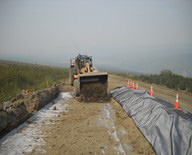
Wicking Fabrics to Minimize Localized Muddy Sections of Unpaved Roads, 2014
Muddy sections of unpaved roads are a universal, common problem. Safety can be compromised when road conditions are not severe enough to warrant a closure. One approach to addressing this issue is the use of wicking fabric (Geosynthetic) for the drainage of moisture within the roadway. This summer (2015) the project will install wicking at three problematic sites and monitor the subsurface moisture content in the National Forests of Kootenai (Montana), Sierra (California), and Allegheny (Pennsylvania). Lessons learned will be shared across the transportation community. The U.S. Forest Service is the lead agency. ...show more about
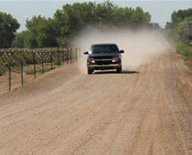
Low Cost Dust Palliative Application for Remote and Rural Communities, 2014
In rural areas, dust from gravel and earthen roads have been identified in remote communities as the number one health and safety issue impacting all community members especially the elderly and the young. Dust generated from vehicle tires is especially problematic during the dry conditions in the winter and summer months. Costs for transporting heavy equipment into remote locations for dust control remediation is extremely expensive and time consuming due to logistical constraints. Dust palliatives will be applied this summer (2015) using light weight equipment that can be flown via small plane to the Village of Ruby, AK. Air monitors are collecting PM10 levels to validate behavior changes and the success of the palliative applications. The EPA and the Alaska Department of Environmental Conservation will be educating community members about the importance of reducing road dust and steps they can take to improve air quality. Lessons learned will be transferred to other rural communities. FHWA is the lead agency. ...show more about